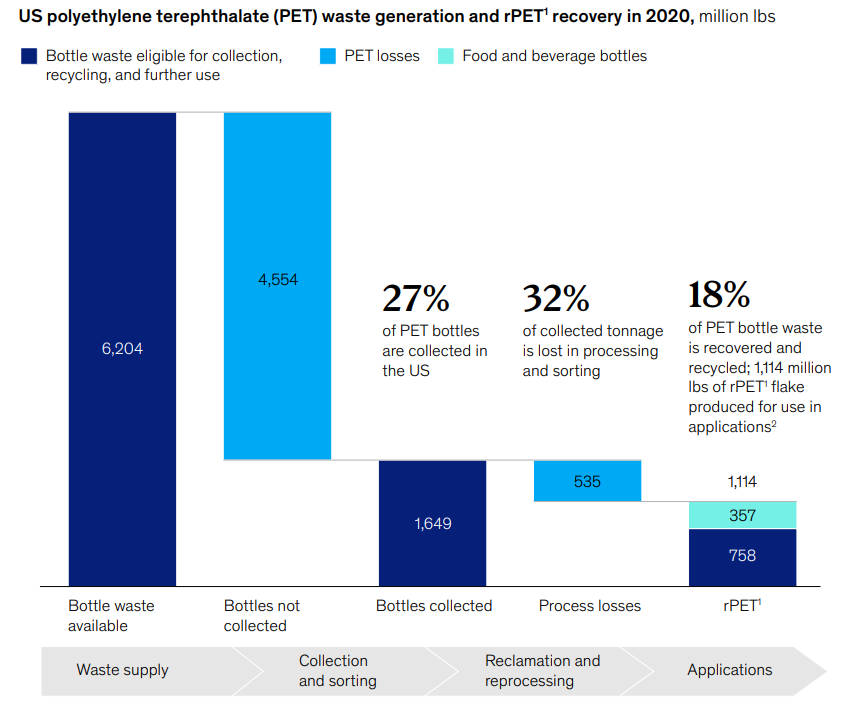Tackling the Complexities of PET Recycling

PET is widely used in beverage bottles and packaging, and grapples with persistent challenges in achieving high recycling rates in the United States.
Despite its inherent recyclability, PET recycling rates remain relatively low, underscoring a complex interplay of factors. One significant hurdle is the limited infrastructure for PET collection and recycling, creating barriers to accessibility for consumers looking to recycle effectively. This lack of convenient and widespread recycling facilities results in a substantial portion of PET ending up in landfills instead of undergoing recycling.
You can also read: The Fashion Industry Needs an Alternative to Recycled PET
Most PET ends up in the landfills
Although PET bottles serve as the primary source for rPET, the current collection rates are limited. According to McKinsey & Company, approximately 27 percent of PET bottles are collected in the US but only 18 percent is recycled, and the rest ends up in landfills. Despite several years passing, there hasn’t been a substantial increase in PET collection or sorting. Consequently, the supply of rPET has only grown by about 1 percent annually from 2012 to 2022 in North America. While there are new players in the reclamation and reprocessing segment, there haven’t been significant reductions in process losses. This results in approximately 4.6 billion pounds of PET annually disposed of in landfills.
Consumers engagement and infrastructure to increase PET recycling rates
Consumer behavior plays a pivotal role in PET’s low recycling rates. Inadequate awareness and improper disposal practices contribute to contamination and hinder the recycling process. The prevalent culture of single-use plastics exacerbates the issue. As items like disposable water bottles contribute significantly to the PET waste stream.
Economic considerations also influence recycling rates. Fluctuating market prices for recycled materials can impact the financial viability of recycling compared to producing new plastics. This economic dynamic, also can deter investment in recycling infrastructure and initiatives.
On the other hand, the complexity of sorting various forms and colors of PET presents another challenge for recycling facilities. This intricacy increases processing costs and diminishes the efficiency of recycling programs, discouraging investments in advanced recycling technologies.
Furthermore, quality concerns further impede PET recycling. Contamination from non-PET materials can compromise the quality of recycled PET, affecting its usability for manufacturing new products. The lack of standardized recycling programs across municipalities adds a layer of complexity, requiring a more unified and streamlined approach to recycling efforts.
To conclude, addressing PET’s low recycling rates demands a comprehensive strategy. Increased investment in recycling, consumer education, and industry initiatives fosters sustainable alternatives for a more environmentally friendly approach. By tackling these challenges collectively, there is an opportunity to shift toward a more circular and environmentally friendly approach to PET use and disposal.

